Product Reviews
Ping S159 wedge review (new B, H grinds) – Club Junkie Review

Ping’s new S159 wedges have been widely discussed in the GolfWRX forums since we spotted them on tour late last year. I was fortunate enough to get two of the newest S159 grinds out on the course to put them through their paces around the green. I will admit that some of Ping’s previous wedge offerings never really suited my eye, but that definitely changed with these S159 wedges.
For a more in-depth discussion and a full review, please check out the Club Junkie podcast on all podcast platforms and YouTube below.
Out of the box, I like the clean and simple look that Ping went with. From address, the wedges have had some of the offset removed and the line from the hosel into the leading edge is straight. A lot of wedges with a little offset have a curve, or “hook,” from the hosel to leading edge that I just don’t love. Ping, however, did away with most of that.
Speaking of the leading edge, Ping has gone a little straighter with it as you see very little curve on the lower lofts (like the 52 degree) and just slightly more radius as you get into the lob wedge. I like the simple look with minimal branding on these wedges and the Hydropearl 2.0 chrome finish looks nice while still reducing glare.
Ping added some new grinds and grind options to the S159 line and if you need a place to start with what wedge fits your game the best, Ping’s WebFit app is a quick way to get some suggestions.
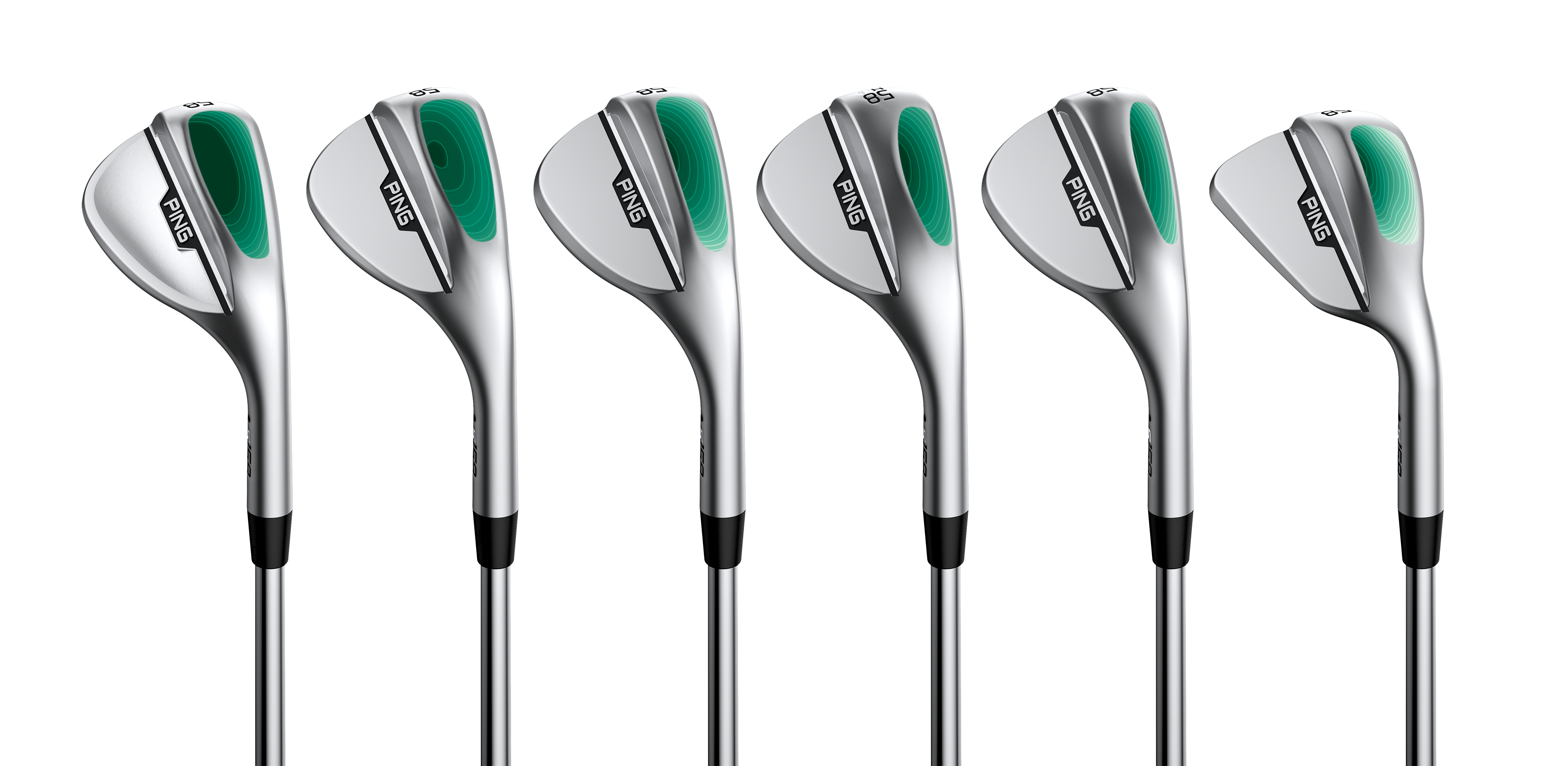
I have been hitting the 56 H grind and 60 B grind. The wedges are cast from 8620 carbon steel and have a nice soft feel to them. When you do miss the center, you will get a little more vibration to your hands as well as a more audible click at impact. My miss with a wedge is typically low heel and definitely noticed a firmer feel and louder sound.
Spin on the S159 was very good, and Ping’s use of smaller grooves on the face produced shots that checked up hard from any distance on the green. Now the smaller grooves are a little hard to clean, so I suggest investing in a nice plastic bristled brush. Playing this early in Metro Detroit does not offer you tight, manicured fairway lies, and the S159 wedges were still allowing me to spin the ball back on fuller shots. Shots out of the rough still spun well and were met with very predictable, although shorter, release. I went a little long on a green and had very little green to work with, so I hit a little chip that just landed beyond the fringe and stopped after about one foot, leaving me well short. I didn’t think the wedge could get enough friction on the ball from that deeper rough, but the S159 proved me wrong.
Ball flight is a little higher than the Vokey SM10 wedges on standard shots for me, but you can still flight the ball down easily for a penetrating shot with a lot of spin. Ping states the S159’s shape is tour-inspired, but they do offer some good forgiveness when you don’t hit it perfectly. As I mentioned earlier I tend to miss low heel with my wedges and the S159 would still give me decent launch and spin, producing a solid shot.
Ping S159 56-10 H Grind
I was a little intimidated by this one, as I haven’t played a sand wedge with this little bounce in a long time. I am a steeper swinger and play in soft conditions, so most of my wedges are in the teens when it comes to bounce. However, Ping does describe the H as “A shot-saving option for players with steeper angles of attack who like to manipulate the handle and play with versatility,” so I didn’t need to be so cautious.
The H grind offers good turf interaction on full shots as the course was soft from a few rainy days, but the wedge got through quickly. Divots were just a touch deeper than some of the higher-bounce wedges I have used, but the H got through and out of the turf pretty quickly.
Around the green, the H grind was versatile and allowed you to open the face while the leading edge stayed close to the turf. I don’t open a 56 up a ton, but it was easy to open it slightly and hit a higher-lofted pitch or chip shot around the green. When you went wide open with the H grind in the bunker, it offered good float and slide through firm sand easily and quickly.

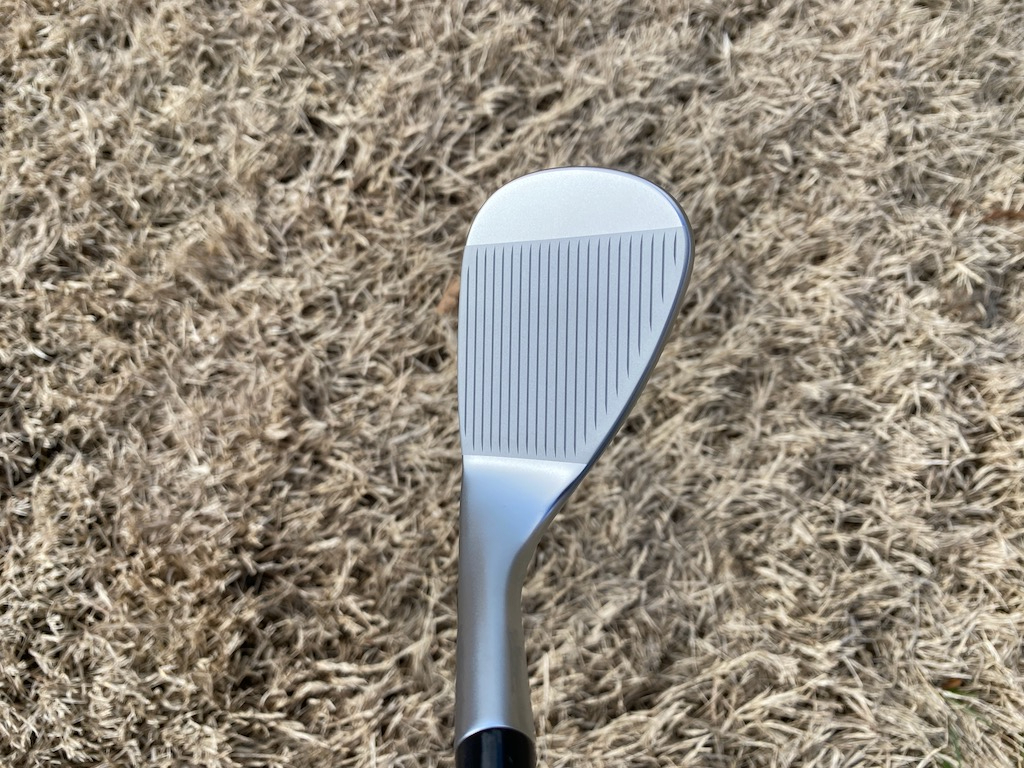
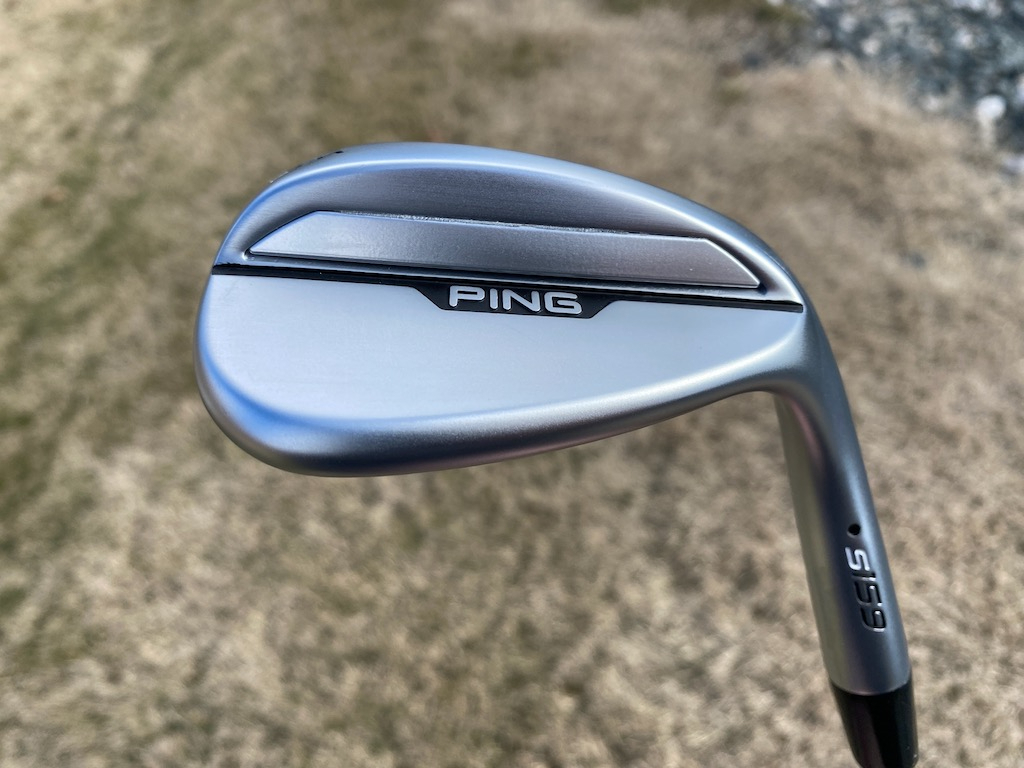
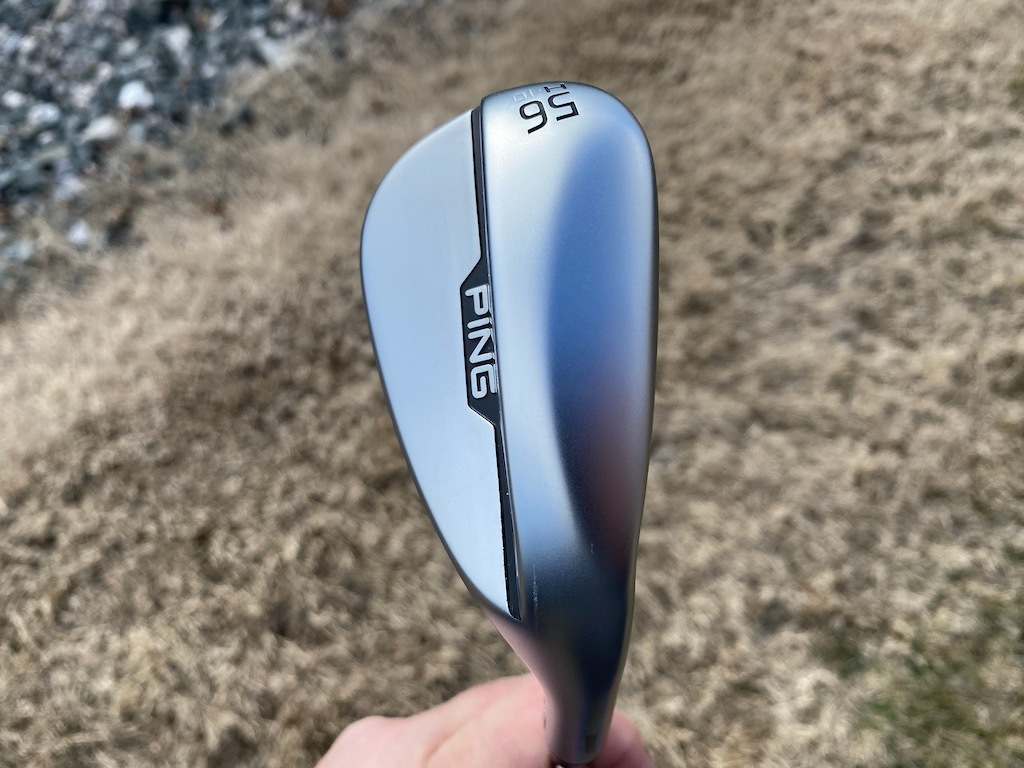
Ping S159 60-8 B Grind
This grind was the one I was most excited to try, but I was a little taken aback when I saw how wide the sole was. Now I am light years away from a tour player who can play flop shots off concrete lies, but I like to open the face a little bit. The B grind is wide and only has a little bit of heel and trailing edge relief. As Ping says, the grind is “For a shallow angle of attack and neutral face delivery. Low-bounce design sits low on the turf on square-face shots.”
Now the B grind does have a nice bevel from the leading edge to the sole that is subtle but allows the wedge to be “thumped” into the turf without worrying about digging while playing it square. As Ping says, square shots are great and you have a bit of forgivness if you hit just slightly behind the ball as the B will glide effortlessly across the turf. You can still open the face a little in some more lush and softer conditions. Shots hit very high on the face don’t carry a ton and lose some spin compared to some of the high-toe style wedges.
Bunkers with softer and fluffy sand are where the B grind will thrive as well; the wedge just floats like a pontoon boat through it. I am usually a 56-degree wedge player out of the bunker unless I am short-sided, but I could see myself using the B grind more and more, as it is just easy and consistent.
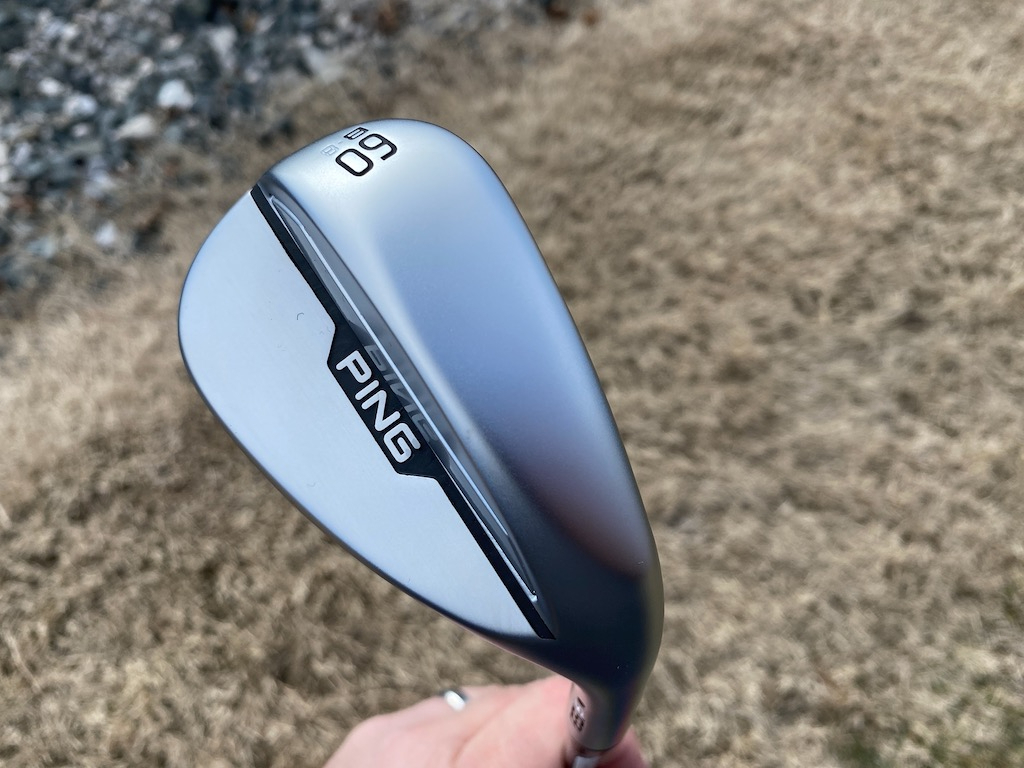
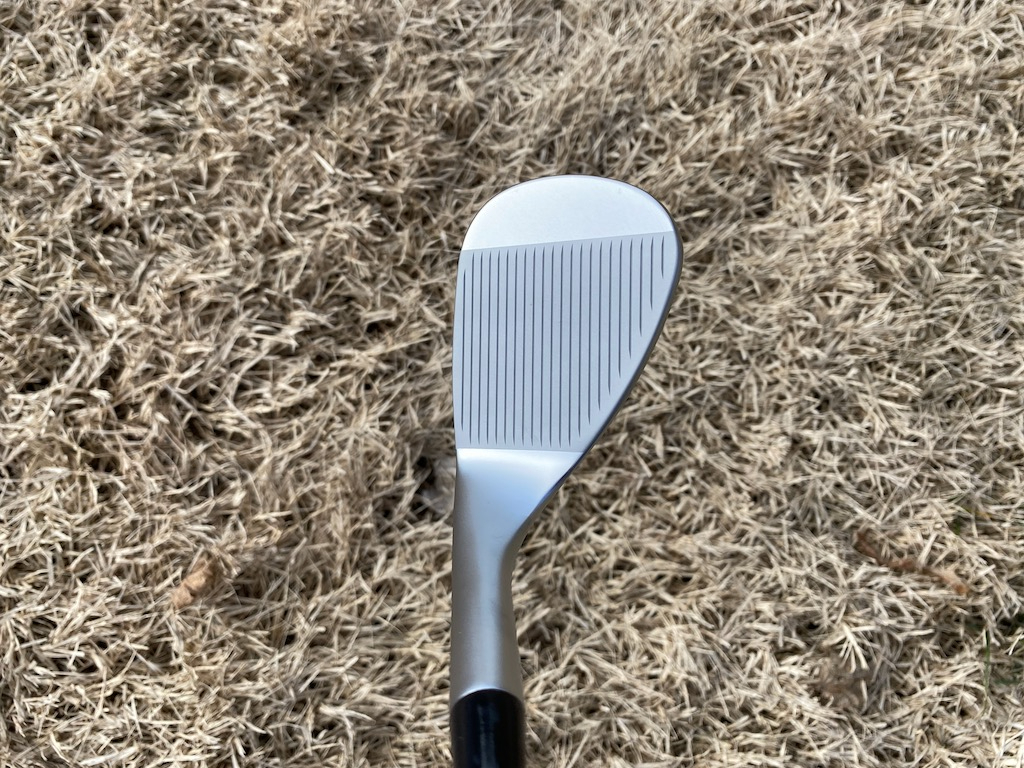
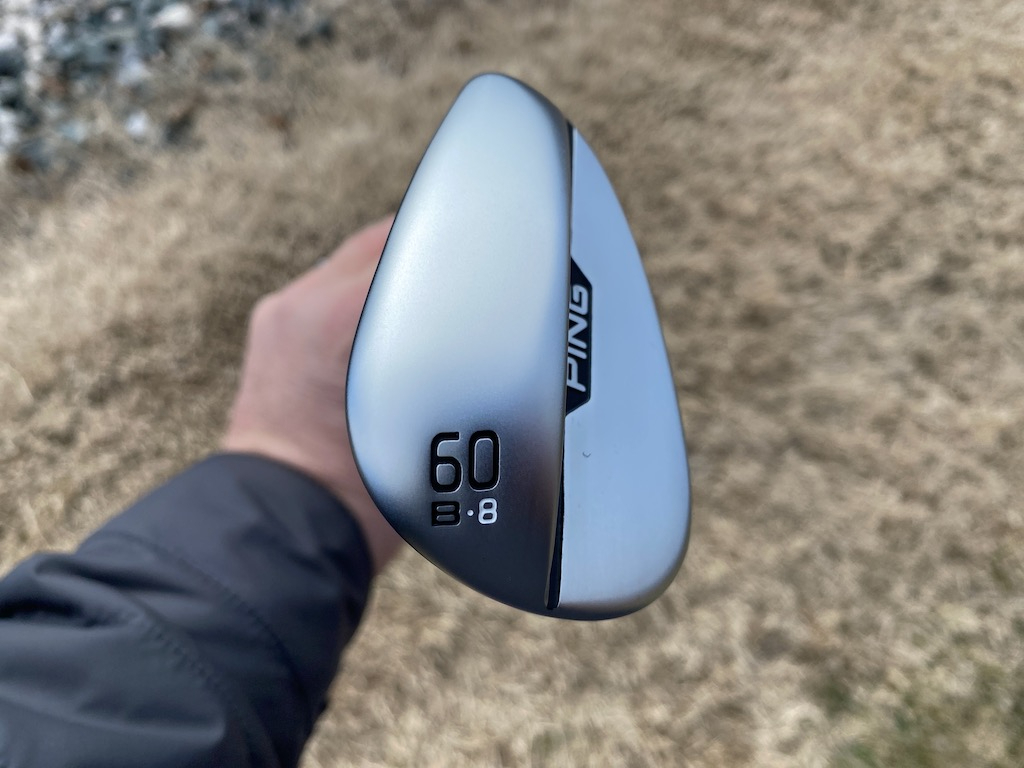
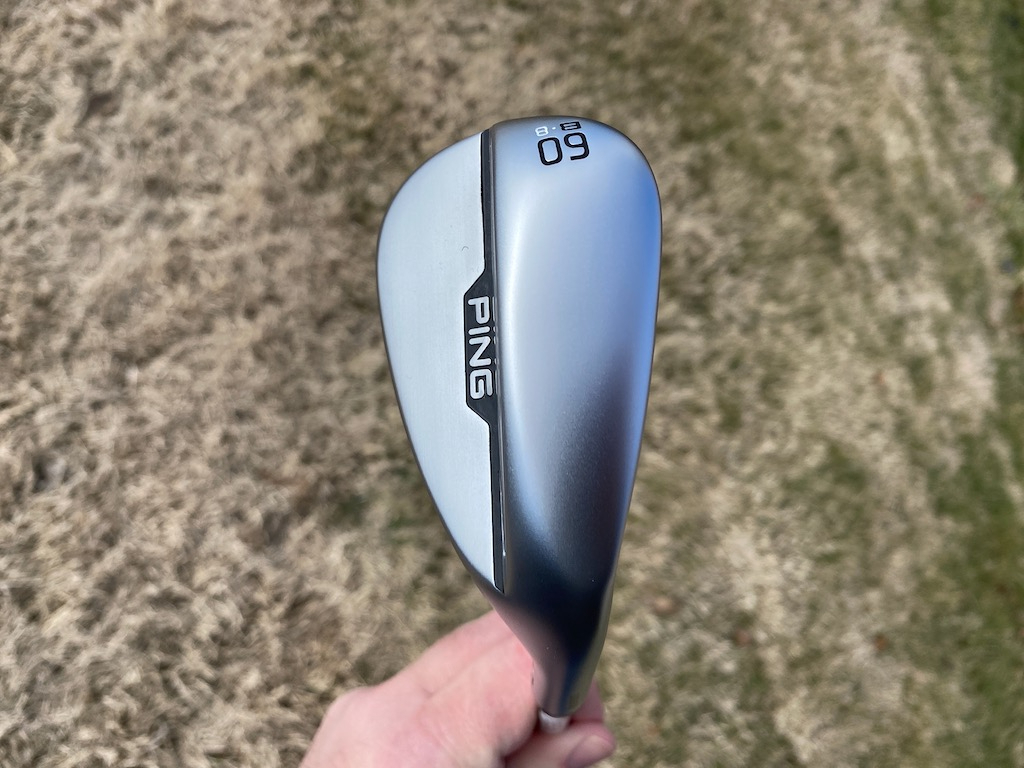
My final thoughts on Ping’s S159 wedges: They are very versatile and playable for a wide range of golfers. If you are looking for ultimate shotmaking or just some consistent wedges that spin well, these can be both. And now that Ping added some grinds and grind options to the lineup, you should be able to find a two, three, or four-wedge setup that complements your wedge game, swing, and course conditions.
- LIKE47
- LEGIT10
- WOW4
- LOL3
- IDHT1
- FLOP1
- OB2
- SHANK1
Product Reviews
GolfWRX member testing: L.A.B. Golf DF3 putters
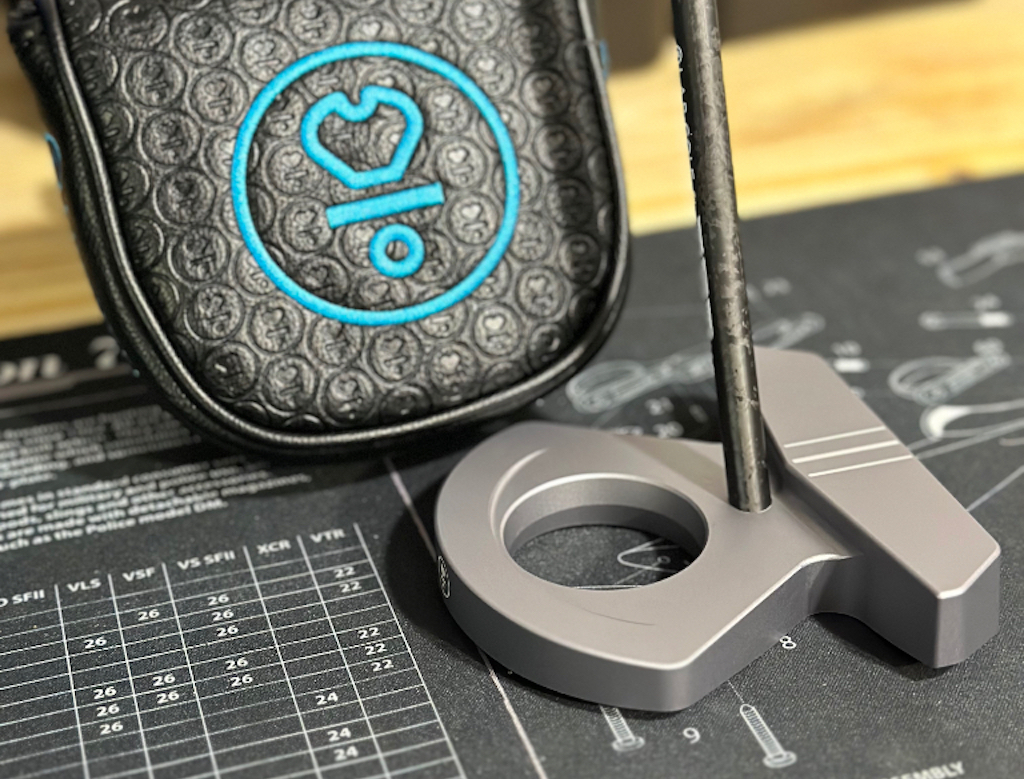
Like L.A.B. Golf’s larger DF 2.1 putter, the new DF3 is “fully automatic.” That means golfers will get the full experience of DF3 wanting to guide itself on the correct path on the way back and through. This is possible thanks to L.A.B. Golf’s patented Lie Angle Balance technology. The technology creates true zero-torque putters that stay square by themselves. Golfers can trust that L.A.B. Golf putters will return to square without any need for manipulation.
How we choose our testers
GolfWRX staff evaluates each entry against the criteria laid out in the testing thread to determine the best fit for each specific product — For example, if a game-improvement iron is being tested, game-improvement iron-playing golfers will be considered.
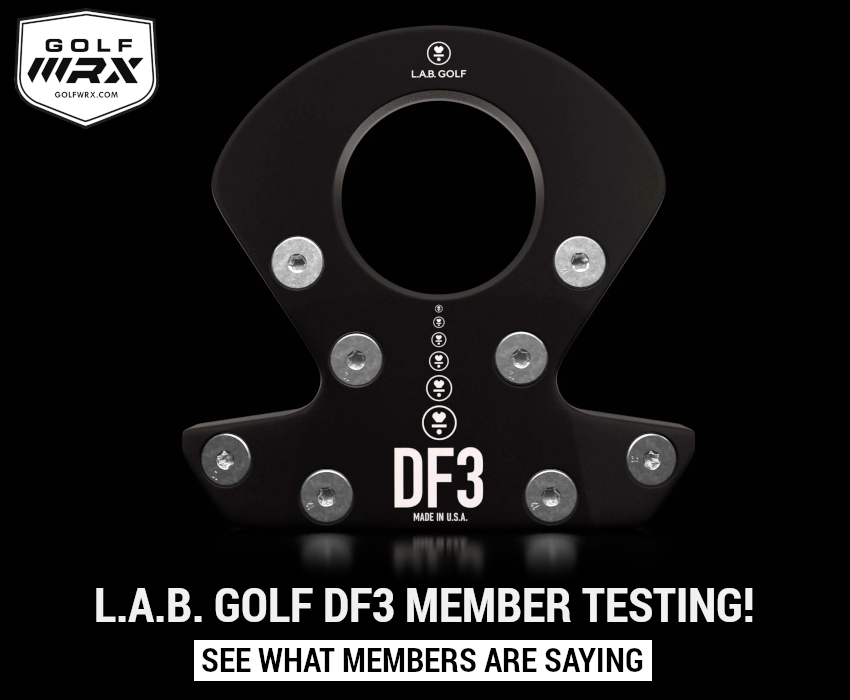
Overall tester feedback
Overall, our testers were impressed with the ease and precision of the remote-fitting process with its custom options. On the whole, even those skeptical about the DF3’s shape enjoyed the ease of alignment and consistent delivery of putter to ball, with some testers pointing to an initial “adjustment period.” Those who had played previous L.A.B. creations universally praised the improved feel of the DF3.
What our members said
“I try to take a lighter grip typically when I putt or at least when I am putting my best. I can do that for the most part BUT it is on the shorter putts lately where the grip gets a little tighter at times. The one thing I tried to focus on, after watching some videos Sam has putt online about how to putt with his putters, was to not feel pressure in my thumbs during the stroke and let the putter swing more freely. When you do this, this putter just wants to rock back and forth. Let the putter/tech do the work for you without your brain trying to telling to manipulate the face in any way. It was a different feeling not having that “torque” working against your hands in the feel of the stroke.”
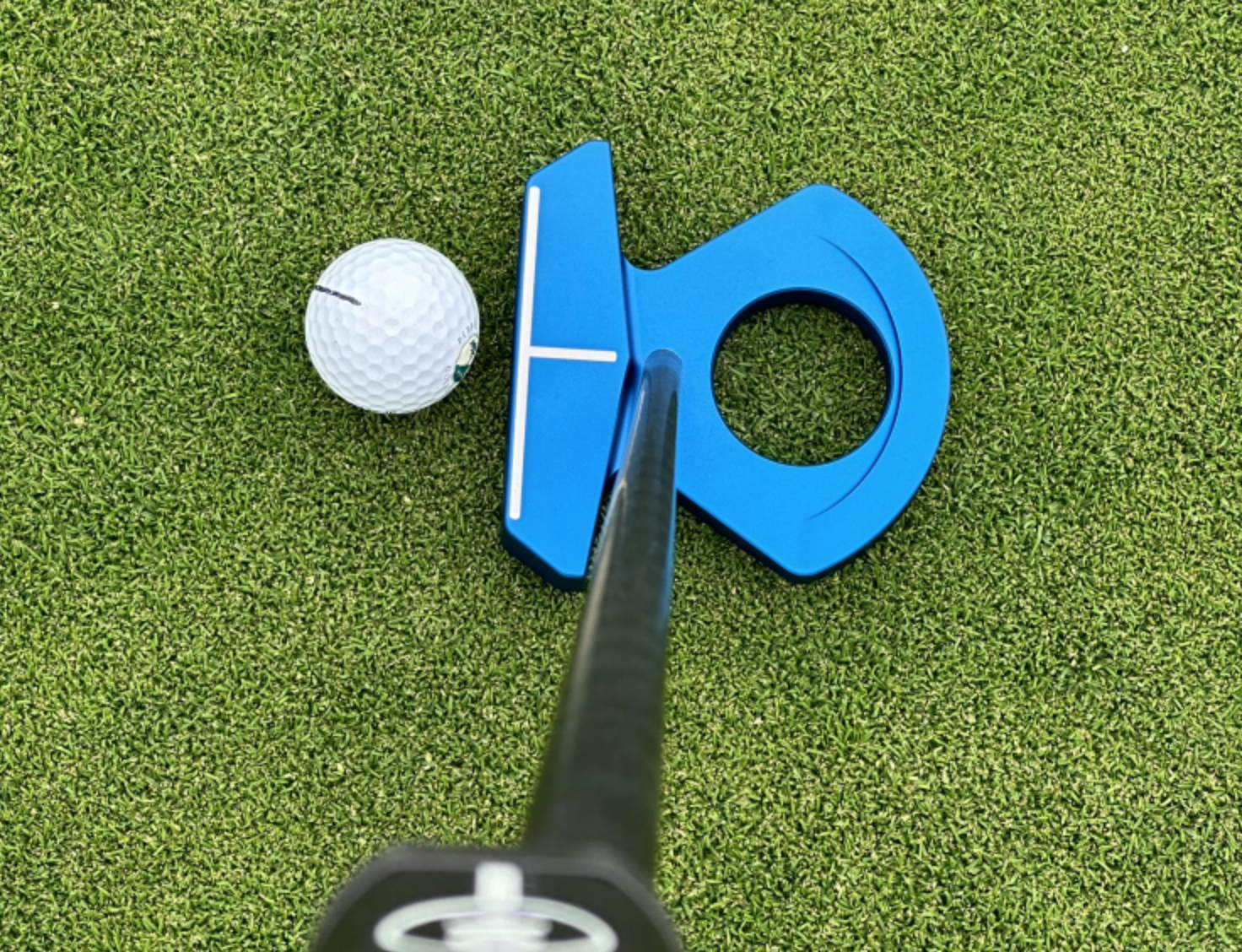
“At this point, I feel completely confident with this putter. I have never seen the ball roll this consistently end over end on my start line. It has made me realize that I definitely have a bit of work to do in the green reading department, but what’s really nice is that it never leaves me guessing. When I watch the ball start on my line and roll perfectly end over end, it is at least nice to be able to definitively say “oh I just misread that” while taking out almost every other variable.”
“Also for whatever reason people find the gimme getter so hilarious. It’s always just “oh cool that picks up balls?!”…Unless something wild happens this putter will be staying in the bag for the foreseeable future including the tournament schedule over the season, I’ve got almost nothing bad to say about it.”
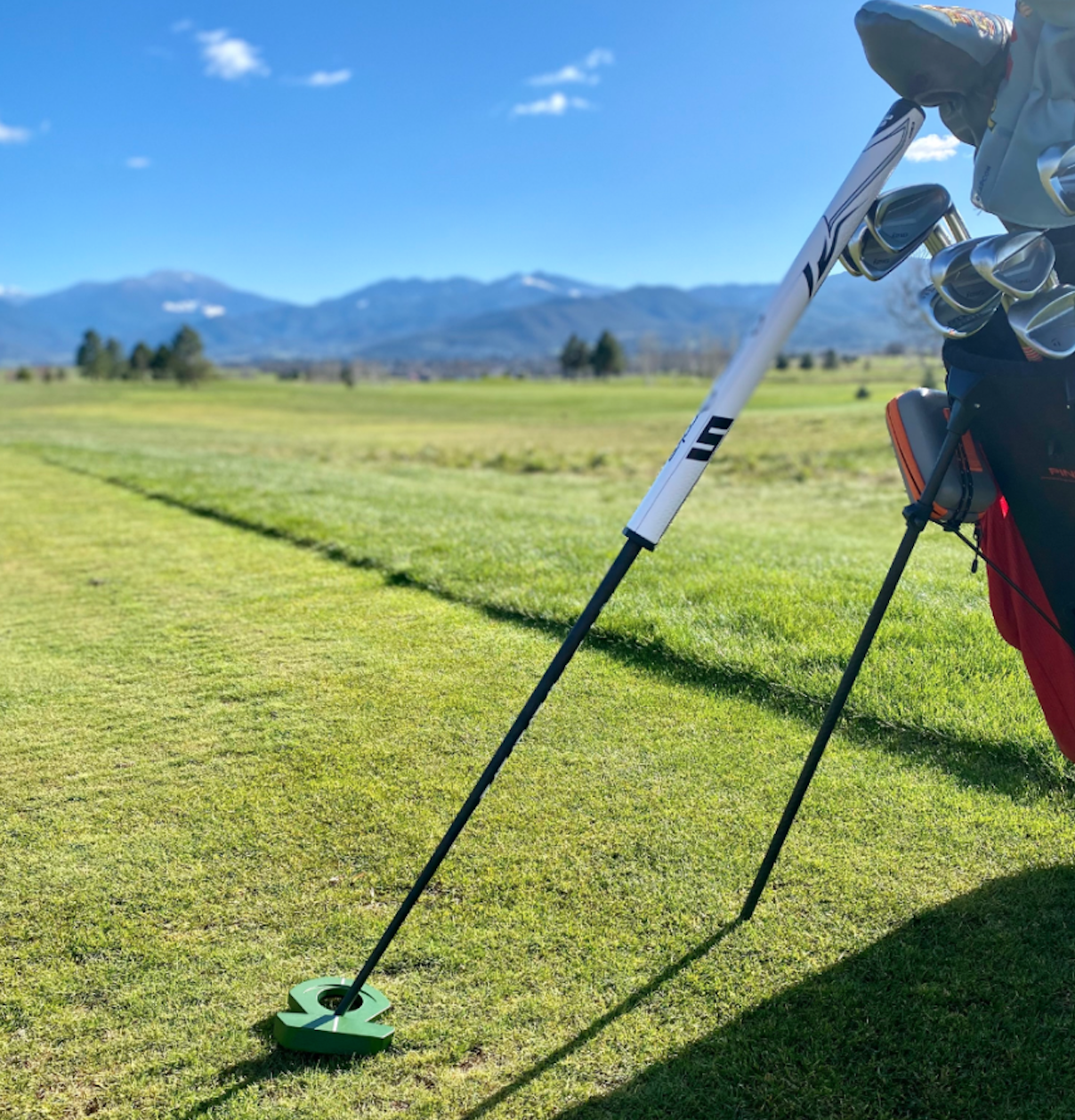
“It’s everything I hoped it would be. I’m very happy I went with the heavier head option, I fear the standard weight would have felt a touch too light for my taste. So shout out to Calvin for being spot on there. At the current weight, I can have a light grip pressure and let gravity do the work. The head just feels incredibly stable and amazingly solid. Speaking of grip, I really debated what grip to go with and the Press Pistol seems like a great choice. The grip feels very versatile for different putting styles, maybe a bit less so for left hand low (imo). I’m mostly a “2 thumbs” guy but have gone back and forth with left hand low as well as claw. The grip tapers down to a smaller flat oval at the bottom. I didn’t love it for left hand low, but for a claw style grip it is really really good.”
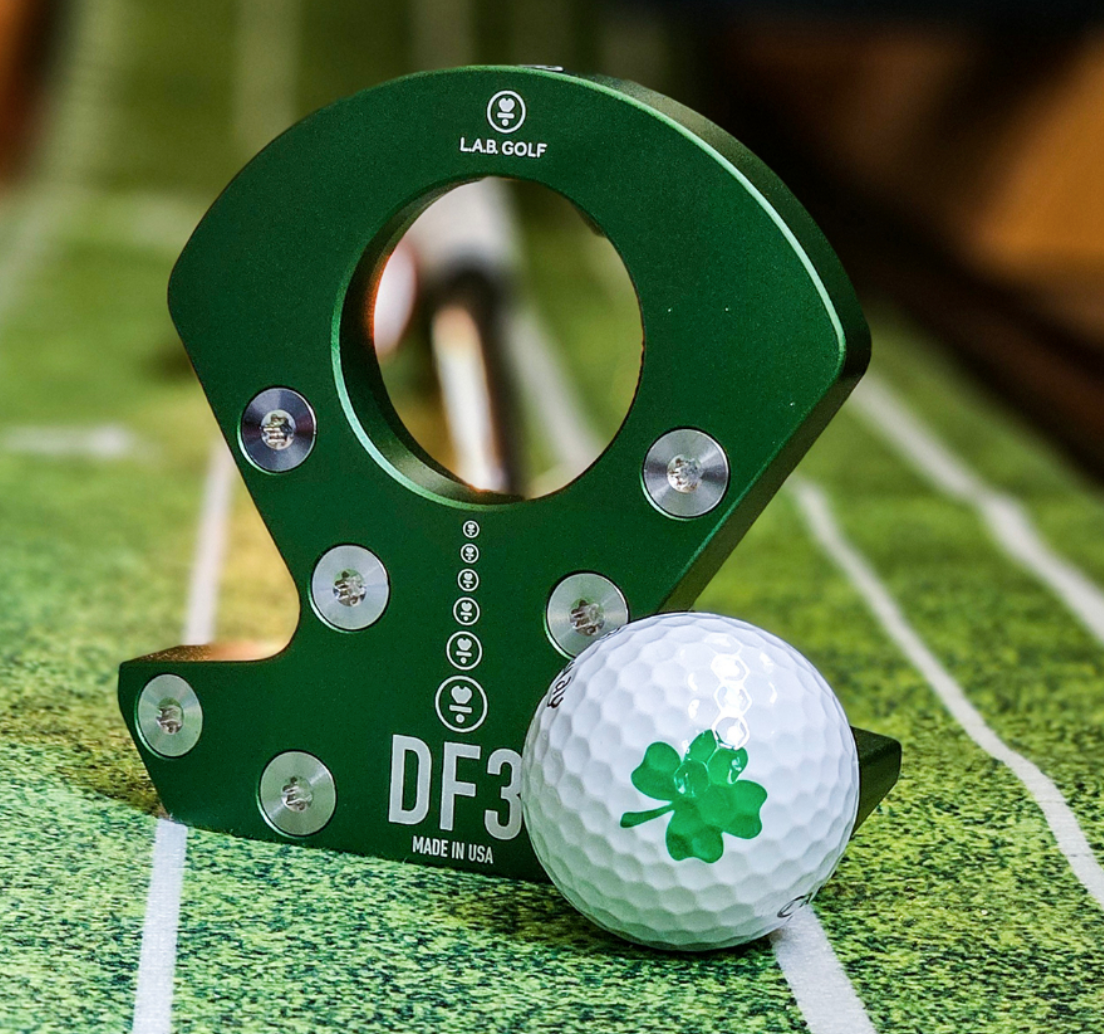
“This putter isn’t going to magically turn a poor putter in to Brad Faxon on the greens. But what I can say with confidence is that removing the excessive face rotation from the putter makes creating a repeatable, consistent stroke infinitely easier to obtain. If you’ve been wanting to try a LAB putter, this is the one truly worth taking the dive on in my opinion. Having never been completely blown away with the Mezz or DF 2.1, this putter has really changed my opinion. I’ve always been really intrigued by the technology, and completely buy in to the concept, but I’ve never been able to get past what I perceived to be less than stellar looks, sound and feel. LAB, in my opinion, has address and improved on all of those things. While this putter still looks far from conventional, it did not take long to get comfortable with the look or footprint. It’s not overly obnoxious in size and sets up so well behind the ball.”
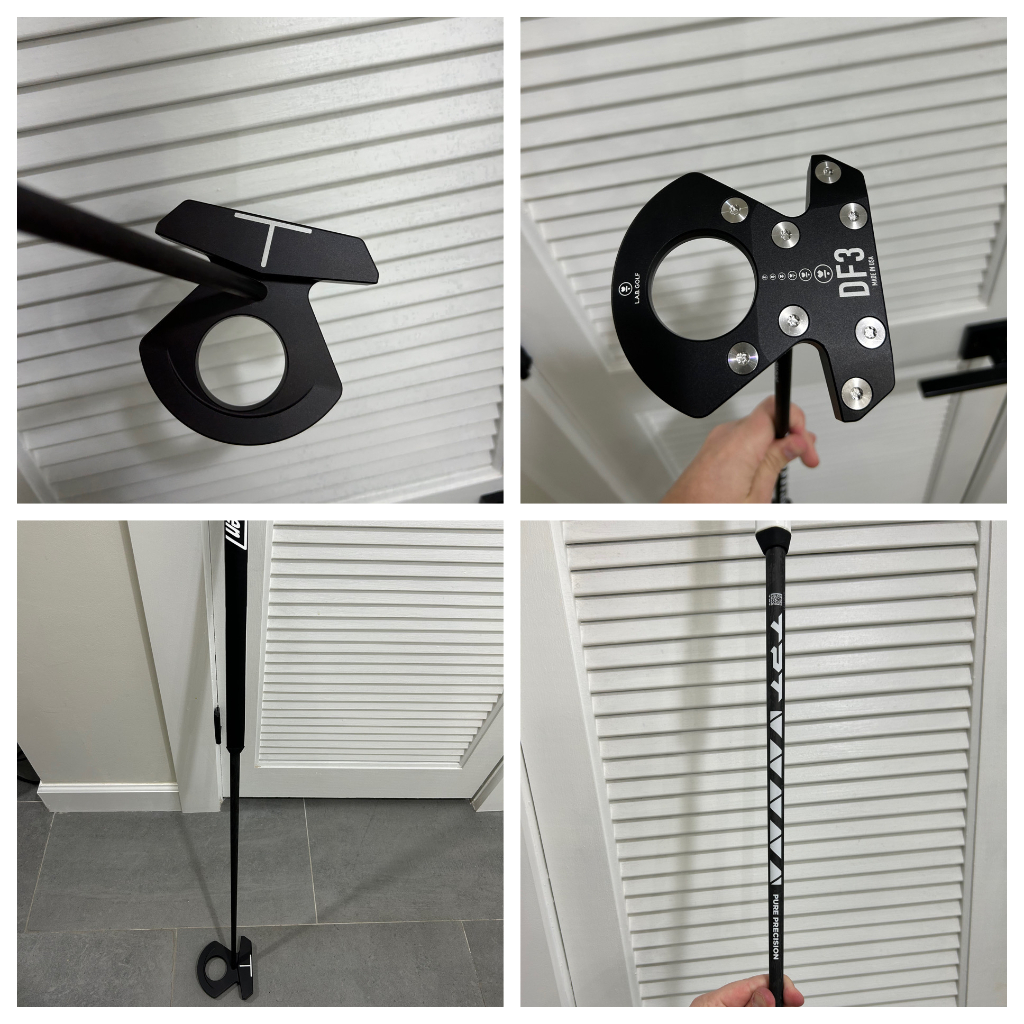
“As far as consistency, it’s ridiculous. You can hit these putters ANYWHERE on the face and the ball rolls end over end. And whether you hit it in the middle, on the toe, or on the heel. The balls roll pretty much the same distance, easily within 6″ of each other.”
“LAB really did a great job with the new smaller size as well. The DF 2 always felt like I was putting with a branding iron. The DF 3 is a perfect compact size and very easy to look down at.”
“The DF 2 I had was an armlock putter. So my only concern with the DF 3 was the grip. I have never been a hands pressed forward putter. It was recommended to me to go with the Press II 1.5* grip so I did. Went with the textured grip and it is perfect. I putt with the pencil grip and my hands are very comfortable.”
“As much as I love the roll that the PXG milled face putters (which I’ve been using for years) put on the ball the DF 3 is even better. Can’t believe I’m saying this but you will soon see my PXG putter on the BST.”
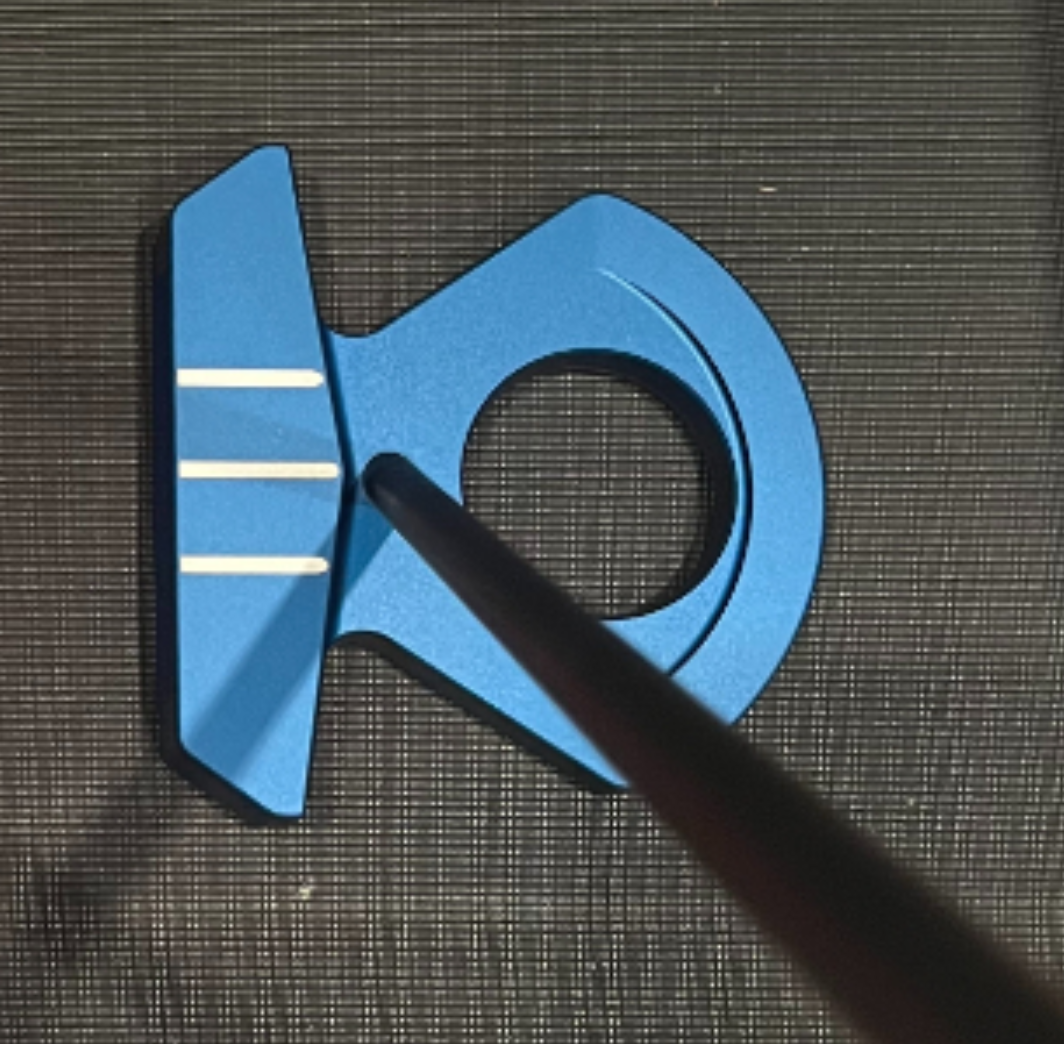
Member review themes
- Ease of remote fitting process
- Putter stability
- Surprisingly good sound and feel
- Ease of getting a putt on line
- Ease of alignment
Check out the full review thread here.
More about GolfWRX member testing
Member testing gives our forum members the opportunity to put the latest golf equipment through the paces. In exchange for getting a product to test (and keep), forum members are expected to provide in-depth product feedback in the forums, along with photos, and engage with the questions of other forum members.
For brands, the GolfWRX member feedback and direct engagement is a vital window into the perceptions of avid golfers.
You can find additional testing opportunities in the GolfWRX forums.
- LIKE11
- LEGIT1
- WOW0
- LOL1
- IDHT0
- FLOP1
- OB2
- SHANK2
Product Reviews
UST Mamiya Dart V iron shaft review – Club Junkie Reviews
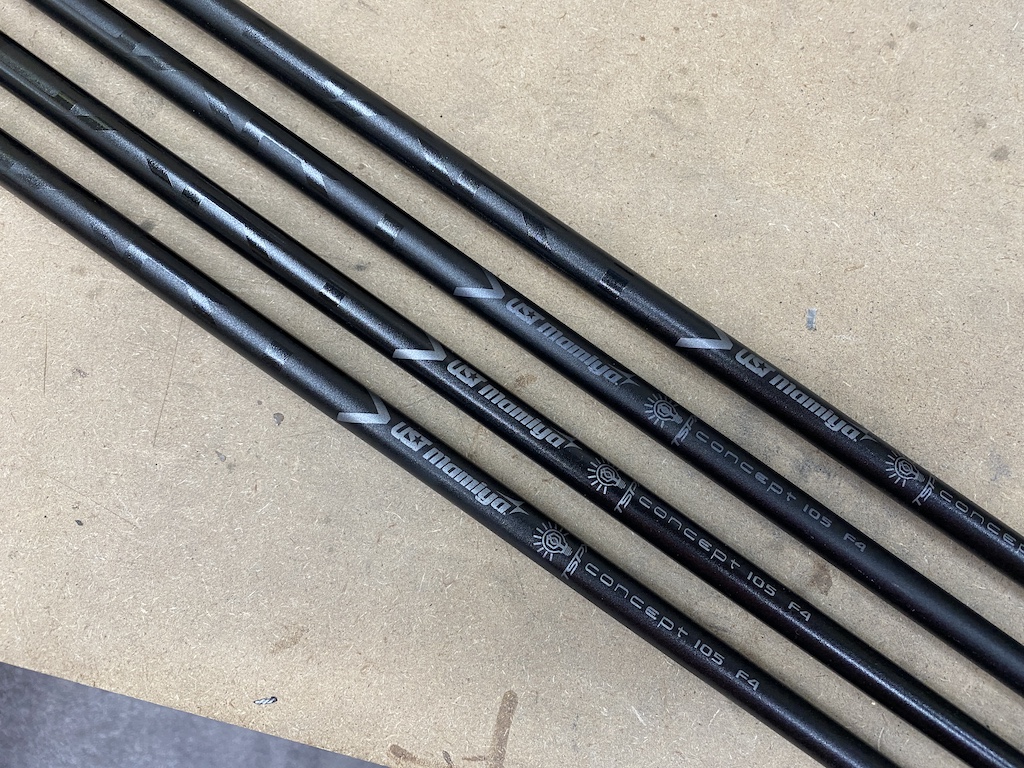
Recently, graphite iron shafts have grown in popularity as technology has taken giant leaps forward. The old thoughts of graphite being too soft, too high launching, or too inconsistent have gone by the wayside. This new batch of graphite iron shafts has been played by all levels of golfers, from players who do need help with launch and spin to professionals who are looking for added control.
Today, we’re taking a look at one of these “new graphite iron shafts.” UST Mamiya Dart V irons shafts come out of the company’s TSPX Lab that creates the most cutting-edge designs and uses the latest materials.
Check out the full review on YouTube below or on any podcast platform.

UST Mamiya’s Dart V shafts are designed around Dual Action Recoil Technology that makes sure the entire shaft flexes consistently for much tighter shot dispersion. The Dart V shafts are offered in 90, 105, and 120-gram weight options to fit a wide range of golfers. UST Mamiya also has very tight tolerances and quality control to ensure that every shaft is the same in the set. Utilizing Torray M40X carbon fiber gives the engineers a material that is 30% better tensile strength and gives the shafts better feel with less harsh vibration.
I went with the Dart V 105 F4 (stiff) shafts as I have found more success with lighter shafts as I have gotten older. Building these shafts up with a set of Vega Mizar Tour heads was very easy and didn’t take a lot of tip weights. I think the 7-iron needed a small 2g tip weight and the rest were installed without any weight at my desired D1 swing weight at standard length with standard size grips.


Out on the course, the first thing I noticed was how tight the Dart V 105 feels. Every swing feels like the shaft is under complete control, no matter if you take a partial or went after it. Stout is a great term for the shafts as they definitely play true to flex, but they aren’t harsh feeling. While the Dart V plays stiff, it still does a good job of reducing vibration and keeping joints or injured body parts free from additional shock.
You can feel the shaft load during the transition to the downswing, but it has a stiffer feel of less flex than some other graphite shafts. Some players like this boardier feel and will get it with the Dart V. Feel at impact is similar to the loading where you are going to feel some kick at the bottom of the swing, but it won’t be as aggressive as other shafts. On center strikes the Dart V offers a very solid feel with great, soft feedback. When you mishit shots with these shafts you get immediate feedback with some additional vibration that feel players will really like. The mishits aren’t too harsh on the hands but still let the head give you the louder click that your ears will want.
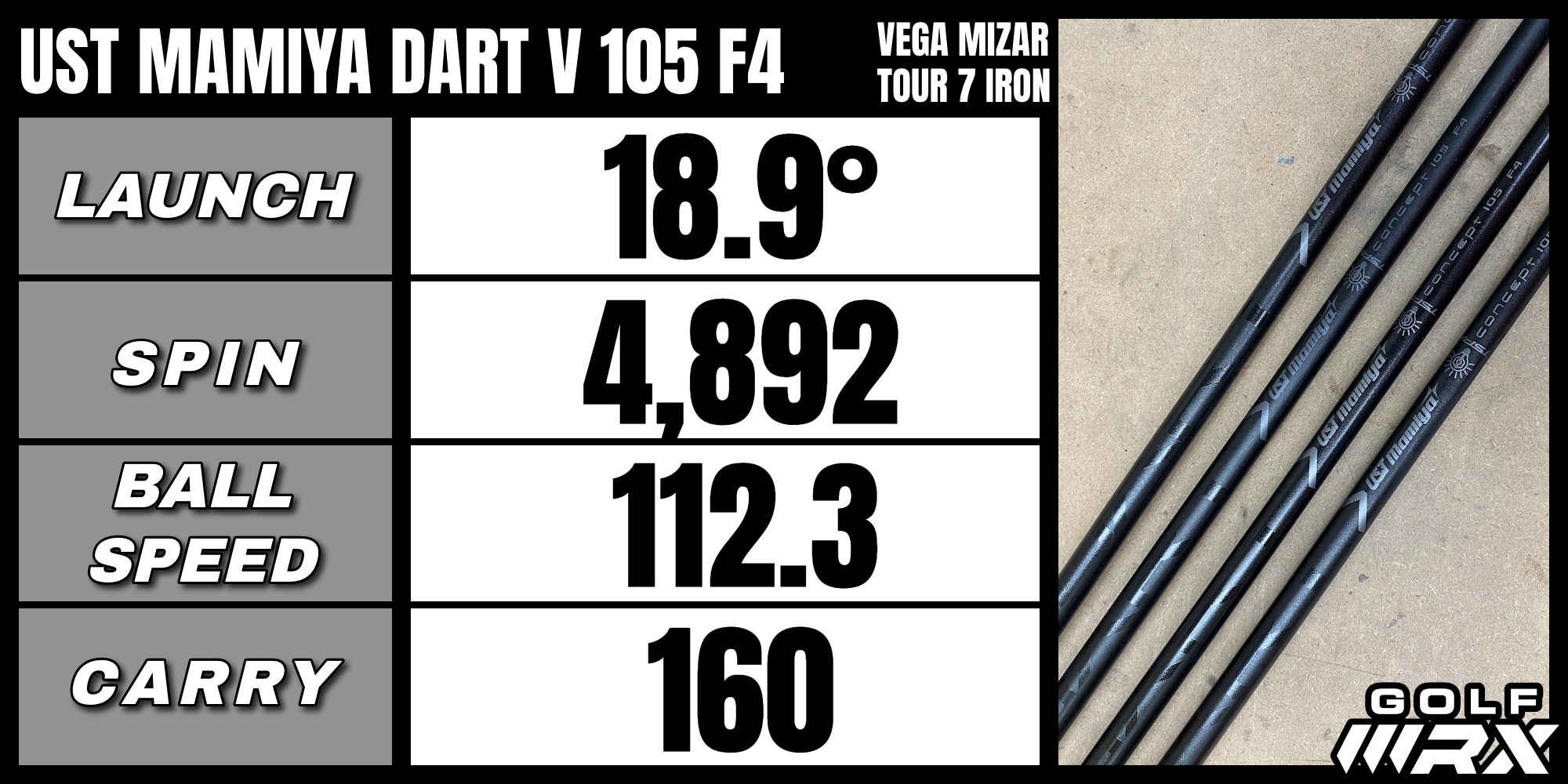
Ball flight for me was lower than I expected with UST Mamiya listing the shaft as more mid-launch. I would consider my launch with the Dart V mid-low launch with a more penetrating flight. Better players will like the ability to flight shots, with any club, higher or lower in order to get the ball close to the hole. The penetrating flight helps in windy conditions as it offers a stable trajectory that doesn’t waver from your aiming point.
Shots that you mishit off the toe or heel go pretty straight and you don’t see big curvature that causes you to really miss the green. Most of those misses come off the face fairly straight and leave you with a fairly easy chip or pitch shot to the green. Distance control is consistent and repeatable as I found on the range that well-struck shots have a very tight carry distance window and I have yet to see some wildly long or short shots show up.


Overall, the UST Mamiya Dart V iron shafts are solid options for players who are very particular about performance. Like other shafts among the new breed of graphite iron shafts, the Dart V delivers the type of shots you need when you need them.
- LIKE10
- LEGIT3
- WOW2
- LOL0
- IDHT0
- FLOP0
- OB0
- SHANK0
Product Reviews
Mitsubishi Diamana putter shaft review (P105 1.0 flex) – Club Junkie Reviews
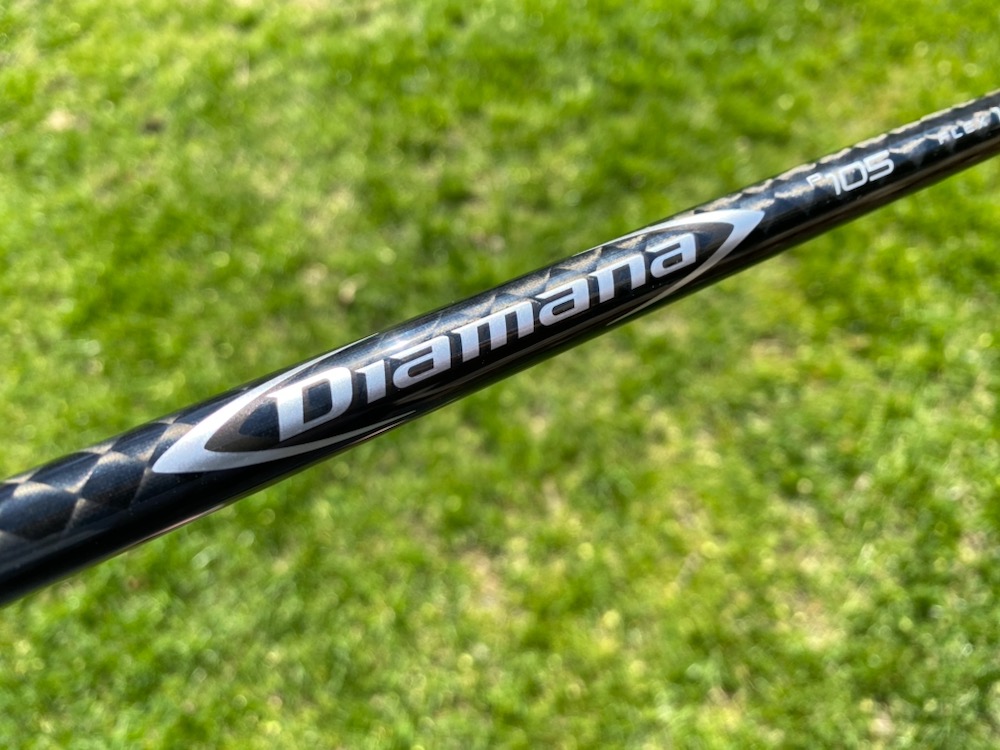
When you hear the Diamana name, you immediately think of the current, or legendary, wood shafts that have been winning on tour for 20 years. However, few die-hard club junkies would think of a Diamana putter shaft, but Mitsubishi Golf is always pushing the limits and are delivering just that.
Graphite putter shafts have been a growing segment in the equipment world with companies noticing that they can create ultra-stable putter shafts that keep the putter on target through the stroke. Graphite also gives engineers the ability to adjust the performance, stiffness, and weight so golfers have more options to dial in the feel of their putter.
To get the full, in-depth review of the Mitsubishi Diamana P105 putter shaft check out the Club Junkie podcast on all podcast platforms or on YouTube.
Out of the box, the Mitsubishi Diamana P105 might be the best-looking putter shafts I have ever seen. The carbon weave at a 45-degree angle just reflects the light well, and then the shaft fades down into black near the tip section. A Diamana staple, the flowerband, is located just a little way under the grip but high enough up where it isn’t a distraction when looking down at the putter.
I installed the P105 into the new Bettinardi BB1 Wide putter, and it looked perfect with Bettinardi’s diamond black finish. The duo is definitely one of the meanest-looking combos in my rotation of putters. Both the P105 and the P135 are built using premium carbon fiber with a low amount of resin for added touch and feel. Mitsubishi utilizes 24t and high-strength intermediate modulus carbon fiber to build up the strength and stability, while the visible 6K woven fabric helps reduce torque.

The first question I get with this shaft is about the 108-gram weight. People areasking if it is too light. Honestly, if the shaft had no markings on it, I don’t know if I could tell that is was lighter than a traditional steel shaft. Now the head might feel a touch heavier and the balance of the putter slightly lower but I didn’t really notice the overall static weight of the putter being too light.
The P135 shaft comes in two flexes, 1.0 and the stiffer 2.0, but the P105 only comes in the 1.0 flex. To me, the P105 might be one of the softer graphite putter shafts I have tried and you can see a little bit of wiggle when you waggle the putter. Some players like a slightly softer putter shaft for additional feel and it can work with the tempo of their putting stroke.
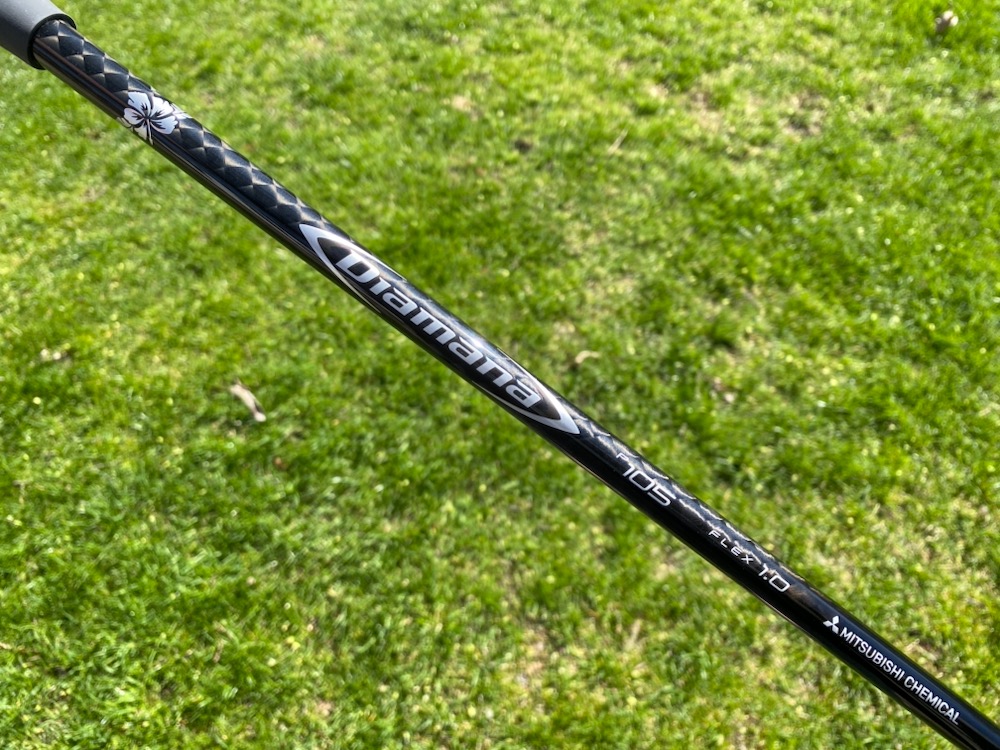
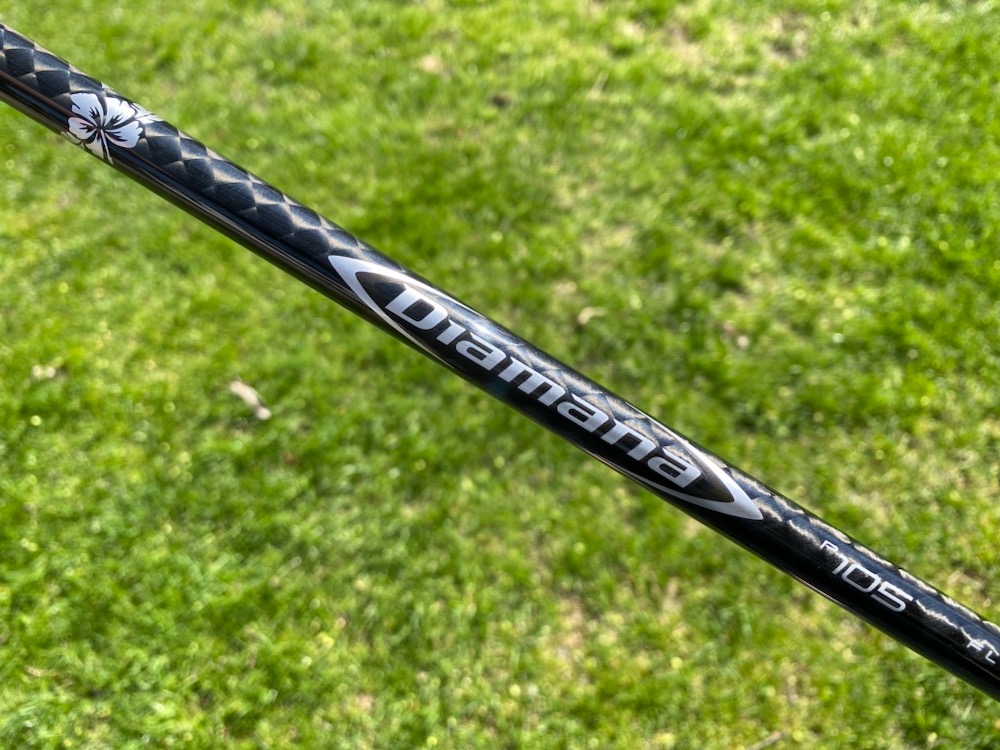
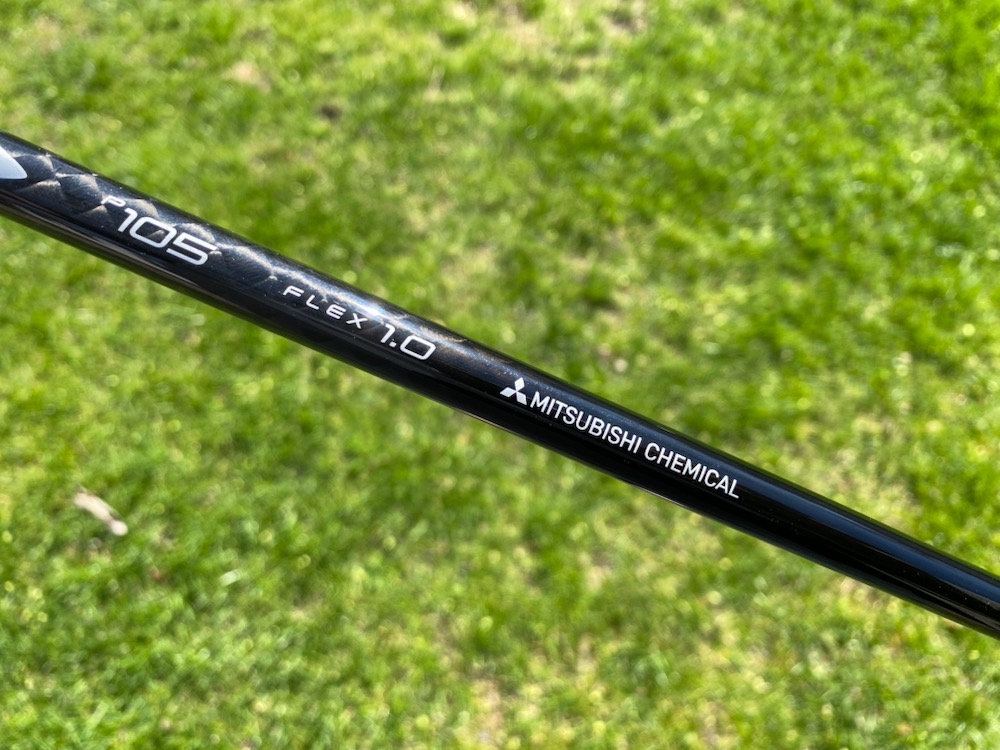
On the course, the Diamana P105 offers the consistent stability that you expect from aftermarket putter shafts. On short putts the shaft stays right with your stroke and the putter head is always where you expect it, aligned with your hands and grip. Shorter strokes don’t show off the slightly softer flex of the shaft and you experience the added control of the low torque design.
When you hit longer lag putts you can notice a little flex in the shaft but the head never waivers from being square to your target. Speed control didn’t change at all from the traditional steel shaft in the Bettinardi to the Diamana. On the practice green hitting multiple putts at the same hole, it was easy to feel like you hit the correct speed and then see the results. Balls ended in the same area, as well as my skill would allow, and I never hit a ball the felt like it came up far shorter or longer than I expected it too.
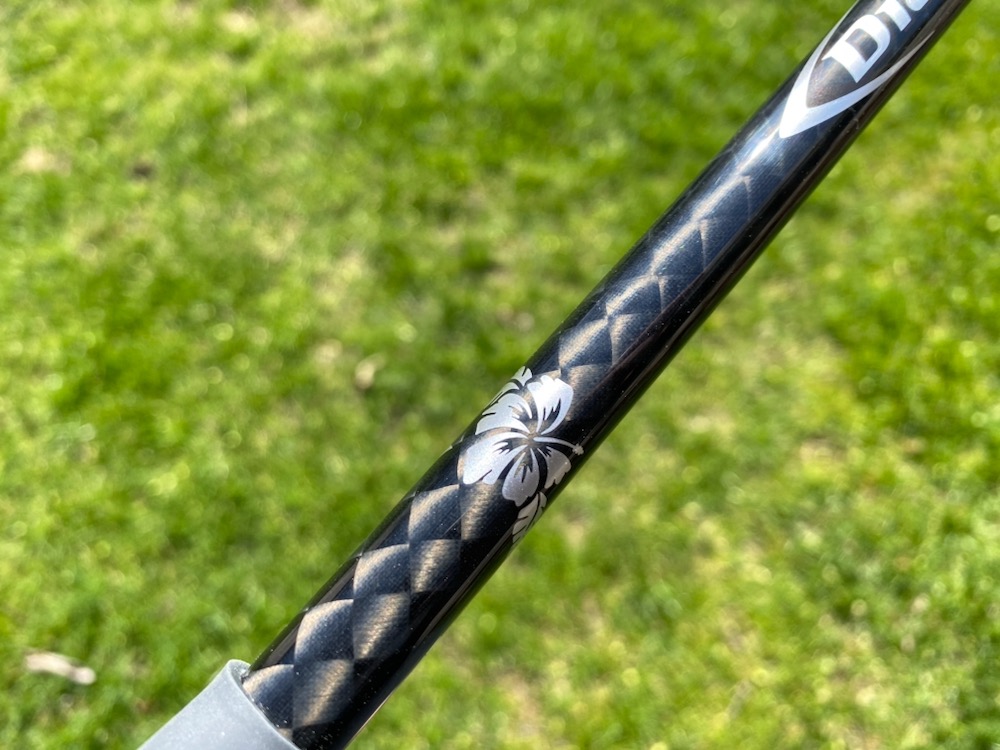
Feel is such a subjective thing and each golfer is going to react differently to it. For me the Diamana had a slightly firmer feel than some of the other graphite shafts out there. If you are looking for responsiveness out of your putter shaft, the Diamana offers just that. To me the Diamana has more of a steel feel to it when it comes to getting the vibration from impact to your hands. You will feel exactly where you made contact on the face, giving you the ability to adjust your stroke and get back to making more center contact. I have found that most other graphite shafts mute the vibration a little and offer a softer feel, but the Diamana keeps the feel and sound exactly as they are.
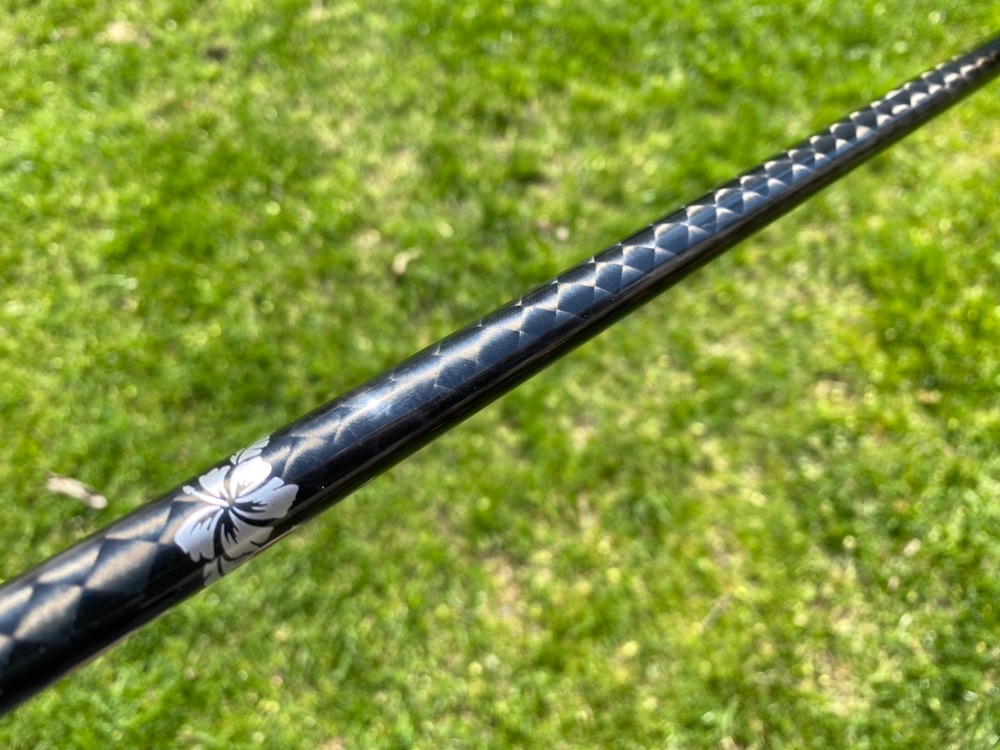
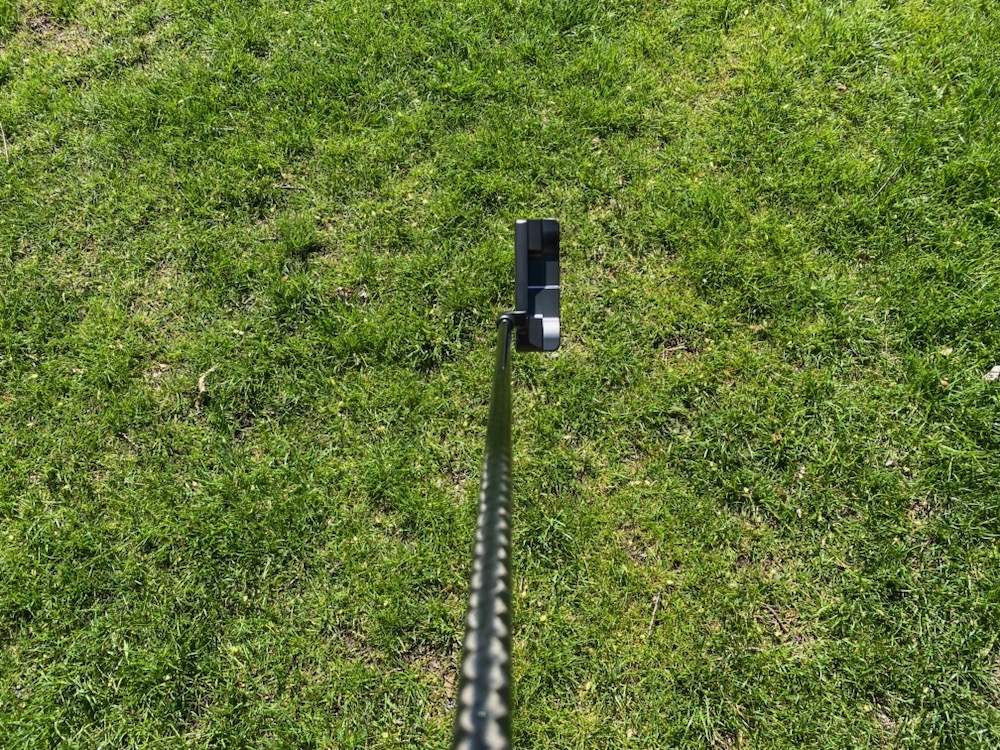
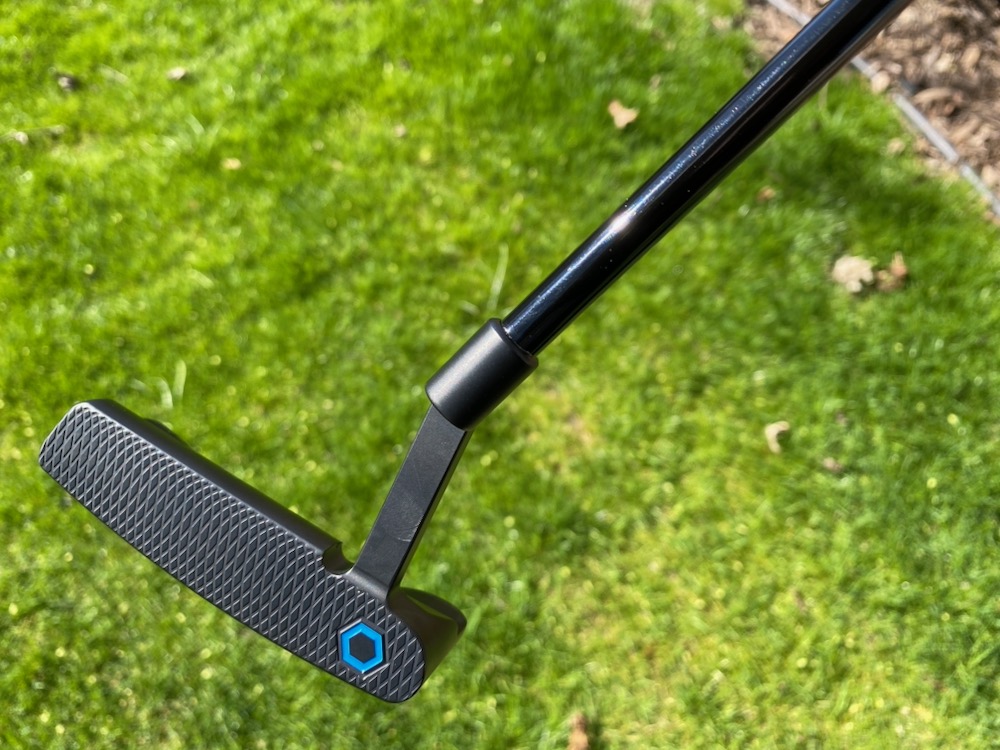
Mitsubishi’s Diamana putter shaft is a great option for the golfer who wants to add some stability and consistency to their stroke without sacrificing feel. Players who love a specific putter face material or milling pattern to enhance their feel will be excited to not lose that with the upgrade to the Diamana.
- LIKE3
- LEGIT2
- WOW1
- LOL0
- IDHT0
- FLOP1
- OB0
- SHANK0
-

 19th Hole3 days ago
19th Hole3 days agoBrandel Chamblee says this is the primary reason why Rory McIlroy hasn’t won a major in 10 years
-

 Whats in the Bag4 days ago
Whats in the Bag4 days agoTiger Woods WITB 2024 (May)
-

 19th Hole2 weeks ago
19th Hole2 weeks agoReport: LIV star turns down PGA Championship invite due to ‘personal commitments’
-

 19th Hole2 weeks ago
19th Hole2 weeks agoGary Player claims this is what ‘completely ruined’ Tiger Woods’ career
-

 Equipment1 week ago
Equipment1 week agoDetails on Justin Thomas’ driver switch at the Wells Fargo Championship
-

 Whats in the Bag3 weeks ago
Whats in the Bag3 weeks agoTeam McIlowry (Rory McIlroy, Shane Lowry) winning WITBs: 2024 Zurich Classic
-

 Whats in the Bag2 weeks ago
Whats in the Bag2 weeks agoKeegan Bradley WITB 2024 (May)
-

 News24 hours ago
News24 hours agoScottie Scheffler arrested, charged, and released after traffic incident at Valhalla



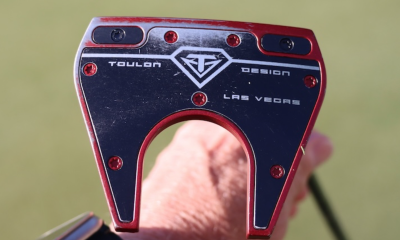

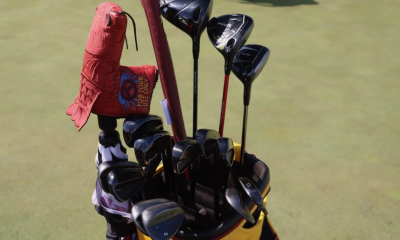



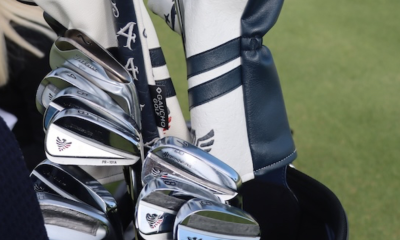

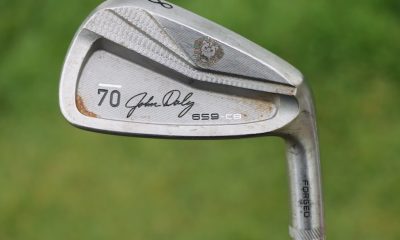











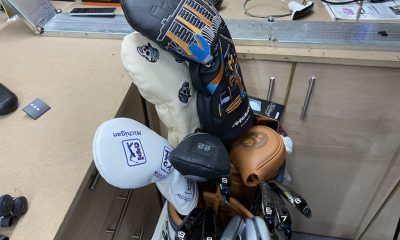

Nick
Mar 13, 2024 at 10:49 am
Sounds like we have similar steep swings. Would you choose H grind over W grind ?
Brian Knudson
Mar 13, 2024 at 8:01 pm
I think for the 60 I would take the H grind over the W, but the W or B might be best for me in the 56
Tom Newsted
Mar 13, 2024 at 7:19 am
I bought the Eye 2 version of this wedge when it came out. just like the rest of the family its clean and does its job well. I use it as my primary bunker club and wow is it a weapon out of the sand. If you are considering new wedges this year I highly recommend looking at these. I was a long time Vokey guy but these pings are a real option right now.
Brian Knudson
Mar 13, 2024 at 8:02 pm
I wish they made that E sole in the traditional looking wedges. I LOVE the way that E sole is out of the bunker as well!